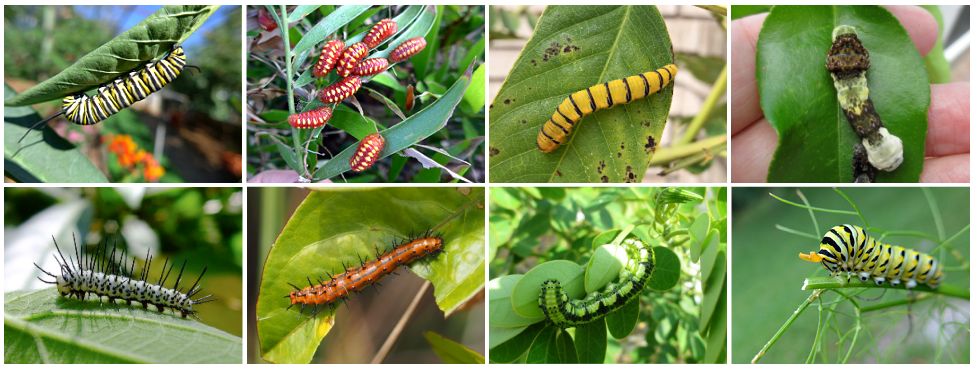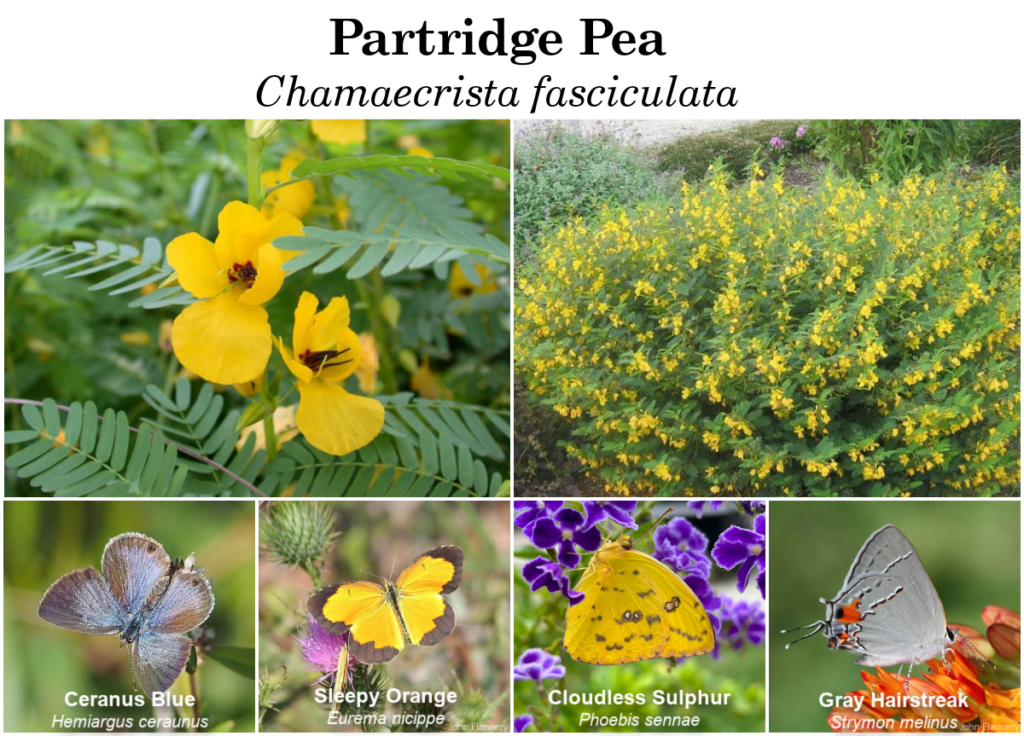Florida is a paradise for butterflies! About 160 butterfly species are native to Florida, while around 200 species migrate through the state. Many butterflies in Florida are unique and cannot be found anywhere else in North America. You can invite many of these butterflies into your yard by including nectar plants for adult butterflies. But it takes more than nectar to entice butterflies to take up residence in your garden.
Larval host plants are the secret to successful butterfly gardening; they are plants required by a caterpillar for growth and development. By planting host plants in your garden, you offer a promise of food for the next generation and will attract more butterflies than you thought possible.

My favorite butterfly and the state butterfly of Florida is the Zebra Longwing (Heliconius charitonius). Female Zebra Longwings lay their eggs on Passion Vines (Passiflora spp.), but their favorite seems to be Corkystem Passionflower (Passiflora suberosa) and Maypop (Passiflora incarnata).

Passionvines are also used as host plants by a few other species of butterflies that are found in Florida including the Gulf Fritillary, Julia Longwing, and the Variegated Fritillary .

Florida also host monarch butterflies. Many monarch chose to head to Florida for the winter and many chose to live year-round in “The Sunshine State.” Monarchs need milkweed to survive and there are many varieties that will grow in the state. The most common milkweed grown in gardens is Tropical milkweed but there are also native varieties that are easy to grow from seed. Monarchs are not the only butterfly to use milkweed as a host plant for their larvae, but Queen butterflies will also lay eggs on milkweed.

Partridge pea (Chamaecrista fasciculata) is an herbaceous annual or short-lived native perennial that has yellow flowers that attract pollinators and bloom from late spring to late autumn and year-round in South Florida. The flowers provides pollen for a number of other insects and birds relish the seed pods that follow the flowers. Partridge Pea is the larval host for Cloudless Sulphur, Sleepy Orange, Gray Hairstreak, Ceraunus Blue, and Little Yellow butterflies.

Carolina Wild Petunia (Ruellia caroliniensis) a native wildflower found in moist to wet hammocks, flatwoods and sandhills, and along roadsides and in disturbed sites. It typically blooms in late spring through late summer/early fall. A source of nectar for bees, butterflies and hummingbirds. The plant is a host for the several butterfly species including the Common Buckeye (Junonia coenia), White Peacock (Anartia jatrophae), and Malachite (Siproeta stelenes) butterfly.

False Nettle (Boehmeria cylindrical) lacks the stinging hairs of its nettle cousins. It prefers medium-wet and semi-shady sites. Stringy heads of tiny yellow-green flowers form between leaf stems in summer. Moths and butterflies are attracted to this modest plant. It serves as a host plant for the larvae of several butterflies including the Red Admiral, Eastern Comma, and Question Mark butterflies. The larvae of the Flowing-line Bomolocha moth also use it as a host.

English Plantain (Plantago Lanceolata) also known as Lance Leaf Plantain, Narrow-leaf Plantain and Ribwort Plantain is a perennial herb that has been used since ancient times as a medicinal herb. Songbirds frequent these plants once their flowers have gone to seed. It is the host plant for the Painted Lady and the Common Buckeye butterflies as well as various moths. It can be aggressive so if you are wanting to keep it contained, it grows well in a container.

Common Rue (Ruta graveolens) is a 2-3 foot tall and wide shrub-like perennial herb with aromatic evergreen fern-like, leaves and with small yellow flowers. It is an especially useful plant for inviting pollinators to the garden, with bees and butterflies being particularly fond of the yellow flowers. It is the host plant to the Eastern Black Swallowtail, and Giant Swallowtail butterflies.

Wooly Dutchman’s Pipe is a deciduous, woody, climbing, and twining vine. It grows rapidly to 20-30 feet tall. The dense foliage would make them an ideal plant for an arbor or trellis. It is also the larval host plant for the Pipevine Swallowtail Butterfly and the Gold Rim Swallowtail. (Please be aware exotic Aristolochia species are toxic to Pipevine Swallowtail larvae including Aristolochia gigantea and Aristolochia elegans.)
 These are just a few of the butterflies you can attract in your Florida garden by planting these host plants for their developing larvae.
These are just a few of the butterflies you can attract in your Florida garden by planting these host plants for their developing larvae.

